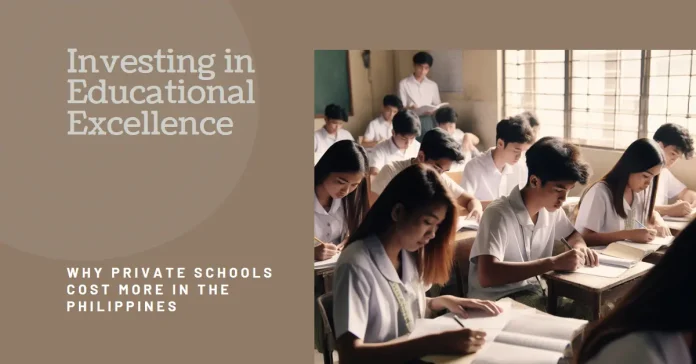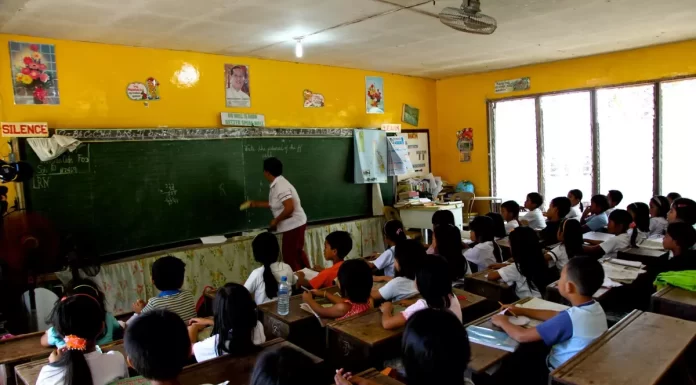Have you ever wondered why private schools in the Philippines tend to come with a heftier price tag? Let’s dive into the nitty-gritty and unravel the mystery behind the expenses.
Why Private Schools are Expensive in the Philippines?
Quality Comes at a Price
Sure, public schools are budget-friendly, but private schools often boast top-notch facilities, experienced teachers, and smaller class sizes. It’s like the difference between dining at a fast-food joint and a fancy restaurant – quality has its price.Beyond Books
Private schools are not just about textbooks and classrooms. They offer a buffet of extracurriculars, state-of-the-art amenities, and sometimes even gourmet meals. It’s not just education; it’s an experience!The Hidden Fees Game
Ever peeked at your bill and wondered, “What’s this miscellaneous fee?” Private schools might have additional costs for field trips, uniforms, and fancy technology. These hidden fees can add up, so reading the fine print is essential.Teachers Deserve Their Due
Private school teachers regularly receive higher salaries than their public school counterparts. It’s a way to attract and retain the best educators. After all, quality education begins with quality teachers.Keeping up with the Trends
Private schools are trendsetters. They invest in the latest teaching methods, technology, and curriculum enhancements. Staying ahead of the curve requires constant updates, which comes at a cost.Economic Realities
The Philippines has its economic ups and downs. Private schools must adjust tuition fees to keep up with inflation and economic challenges, ensuring they can provide a stable learning environment.Public vs. Private
While public schools receive government funding, private schools rely on tuition and fundraising. It’s like comparing a DIY project to hiring a professional – you get what you pay for.Scholarships and Financial Aid
Private schools regularly offer scholarships and financial aid, but these resources aren’t infinite. Explore these opportunities if you’re keen on a private education but want to avoid the cost.Investing in Tomorrow
Parents typically see private education as an investment in their child’s future. Smaller class sizes, individual attention, and a robust curriculum can lead to better opportunities.The Bottom Line
Private schools may be expensive, but many families believe the benefits outweigh the costs. It’s about finding the right fit for your budget and educational goals.
Conclusion
So there you have it – a peek behind the curtain of private school costs. It’s a nuanced game, but armed with this knowledge, you can make an informed decision for your or your child’s education. Happy learning! 🎓
Frequently Asked Questions (FAQs)
Why are private schools in the Philippines more expensive than public schools?
Private schools often provide smaller class sizes, top-notch facilities, and experienced teachers, resulting in higher operational costs than publicly funded institutions.
What additional costs should I know when enrolling my child in a private school?
Private schools may have hidden fees for uniforms, extracurricular activities, and technology. It’s crucial to review the breakdown of costs to avoid surprises.
Do private school teachers earn more than public school teachers?
Private school teachers generally receive higher salaries, making attracting and retaining qualified educators more competitive.
Are there financial assistance options for families considering private education?
Many private schools offer scholarships and financial aid. It’s worth exploring these options, as they can help offset tuition costs for eligible students.
How do economic factors impact private school tuition fees?
Economic fluctuations can affect private schools’ cost of living, salaries, and operational expenses. Adjustments in tuition fees may be necessary to maintain the quality of education.
Are private schools in the Philippines obligated to follow specific educational standards?
Yes, private schools must adhere to the standards set by the Department of Education (DepEd) in the Philippines to ensure a quality education.
What advantages do private schools offer compared to public schools?
Private schools often provide smaller class sizes, individualized attention, advanced facilities, and a broader range of extracurricular activities, contributing to a more personalized learning experience.
Can I negotiate tuition fees with a private school?
While some private schools may have fixed tuition fees, discussing your concerns with the administration is worth discussing. They may offer flexible payment plans or considerations based on your situation.
How can parents determine if the cost of a private school justifies their child’s education?
Evaluate the school’s reputation, facilities, teacher qualifications, and the overall learning environment. Assess whether these factors align with your educational priorities and goals for your child.
Are private schools only for affluent families, or are there options for middle-income households?
Private schools cater to a range of income levels. Some offer various tuition packages, scholarships, and financial aid to make quality education more accessible to a broader demographic.










